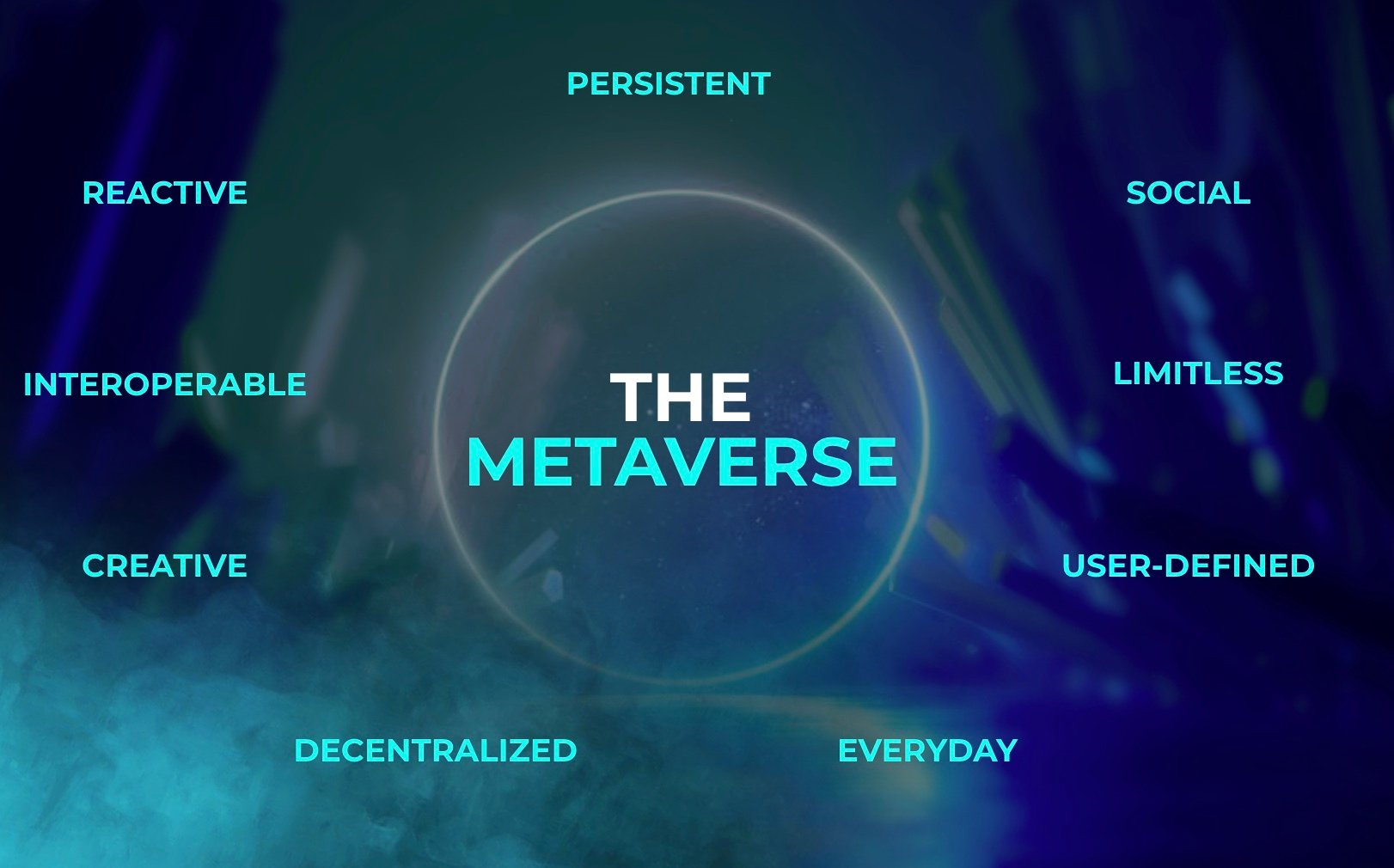- Newsroom
- >
- 3 Things Advertisers Should Ask When Considering Their Metaverse Strategy

3 Things Advertisers Should Ask When Considering Their Metaverse Strategy
We get asked a lot about the metaverse at Anzu. During client briefings, campaign presentations, on-stage events, investor calls, partner briefings, or live webinars, the metaverse will likely come up whenever there is a chance to ask questions.
In response, we’ve shortlisted three questions we most often get asked by advertisers to help them understand what the metaverse might mean for their brand and how they can begin building out their strategy for future metaverse campaigns.
1 — What is the metaverse as we understand it today?
Defining the metaverse is extremely difficult because many people see it differently. One way we have found it easier to understand is by breaking it down into the following nine areas, which together help to paint a picture of what the metaverse encompasses.

- PERSISTENT - a place of perpetual and continuous existence
- SOCIAL - a forum to socialize, meet people, and create communities
- LIMITLESS - no cap on the number of users, experiences, or worlds
- USER-DEFINED - owned and shaped by the people living and participating in it
- EVERYDAY - seamlessly woven into our everyday activities and engagements
- DECENTRALIZED - ownership will be widely distributed across all users
- CREATIVE - a catalyst for creativity where people actively engage with content
- INTEROPERABLE - experiences, possessions, and identities will travel unchanged across platforms
- REACTIVE - the virtual environment and people inhabiting it will react in real-time
The metaverse is the next frontier of social connection, and games are its natural starting point. Social interaction and virtual hangouts are starting to become the biggest ways that people spend time on these platforms. There is a lot to it from a hardware and tech perspective, but it’s essentially an advancement of human connection.
It can often feel like the metaverse has come out of nowhere. However, the term has existed for some time. It’s only recently that it has become more commonplace, in part thanks to prolonged lockdowns around the world, which made people understand the benefits of living in a virtual world more vividly. Investors have also realized this potential by investing in companies that were building toward the metaverse. This, in turn, has given these companies more resources to build out even more metaverse strategies.
2 — Where in the metaverse does my brand make sense?
When advertisers ask us if we can get them into the metaverse, we try to get them to think about this approach differently. First, we get them to take a step back to understand what their audience looks like, if they have a specific campaign in mind, and how they plan to bring their message to life in the 3D world. Then, we look at where it makes sense for their campaign to run.

Metaverse platforms like Roblox are a great way to engage with consumers, and by matching up your target audience with players on these platforms and ensuring your ad creatives make sense for the gaming environment, you will undoubtedly find huge success in reaching a highly engaged and diverse audience. You can read about how we have helped brands from many different verticals enter the 3D world here.
When we talk about the metaverse with clients at Anzu, we are referring to social platforms and games like Roblox and The Sims, where players can come together to create, interact and hang out. Finding the right place for your brand in such a wide variety of games and platforms can be challenging, so it is important to work with providers who understand this space and can use data and learnings to help you understand where your brand might fit in.
3 - Is my audience in the metaverse?
Coindesk recently published data which found that Decentraland and The Sandbox, two popular examples of virtual platforms often mentioned when the metaverse is spoken about, see well under 1,000 daily active users. When checking both platforms, Coindesk found Decentraland had 23 active users in the past 24 hours, and The Sandbox had 616 daily active users.
The Wall Street Journal recently reported that Horizon Worlds, Meta’s flagship social VR app, which has been pushed as the social platform of the future and an entry point to the metaverse, has 200,000 monthly users as of October 2022. According to internal documents, that is a drop from 300,000, the last public figures Meta shared eight months prior.
-jpg-1.jpeg?width=2140&height=1150&name=Blog_METAVERSE_Why%20the%20metaverse%20is%20bigger%20than%20you%20think%20(1)-jpg-1.jpeg)
Although it is likely these platforms will continue to gain pace and build themselves out, we have highlighted them to help showcase that simply ‘wanting to be in the metaverse’ is not a smart strategy. Like all other advertising platforms, you first need to understand where your audience is, whether it makes sense for your brand to enter this space, and, if it does, how you are going to do that in a way that complements the experience while standing out and catching the attention of your desired audience.
It is also important to remember that when new platforms and technologies emerge, it often takes time for them to grow and for different audiences to adopt them. Facebook is a great example of a platform that began with students and young people and grew to mature into a platform that today is favored and used by older generations.
If we look at Roblox again, it has seen monumental growth over its time, with 58.8 million daily active users as of Q3 2022. However, with only 14% of users over 25, it is predominantly used by Gen Z and Gen Alpha. If they are your target audience, then great. But if they aren’t, then perhaps you should either consider another platform or use it as one component of a larger overarching marketing campaign. Again, it all comes down to who you are trying to reach.
One of the reasons so many brands are flocking to gaming and seeing huge success is that they have figured that this is where their audience is spending huge chunks of their time, and brands have learned how to engage with this gaming audience in an effective and non-disruptive way that enhances the gameplay. Gaming is also a great way to understand how your brand fits into the 3D world — as we have seen time and time again, brands that have built out and mastered their gaming strategy will have a huge headstart when it comes to advertising in the metaverse.
Book a call with our team of in-game experts to learn where your audience is and how to reach them effectively.

Nick is Anzu's Content Lead. As a gamer with a background in AdTech, he has a unique perspective on the industry and the in-game advertising sector.